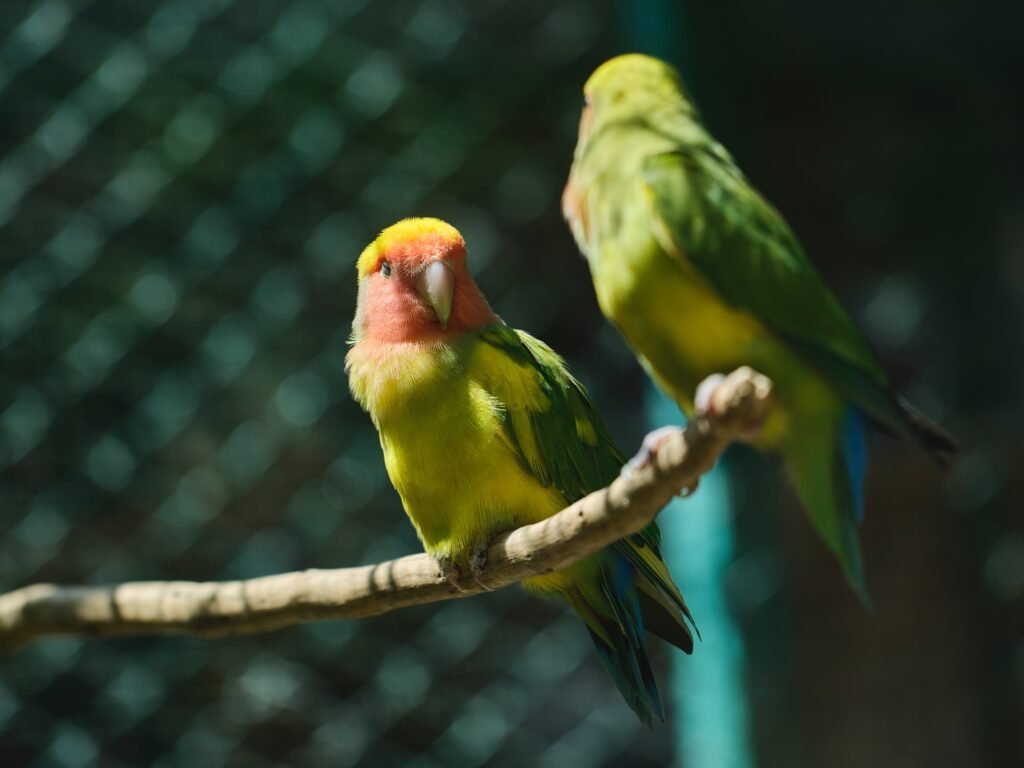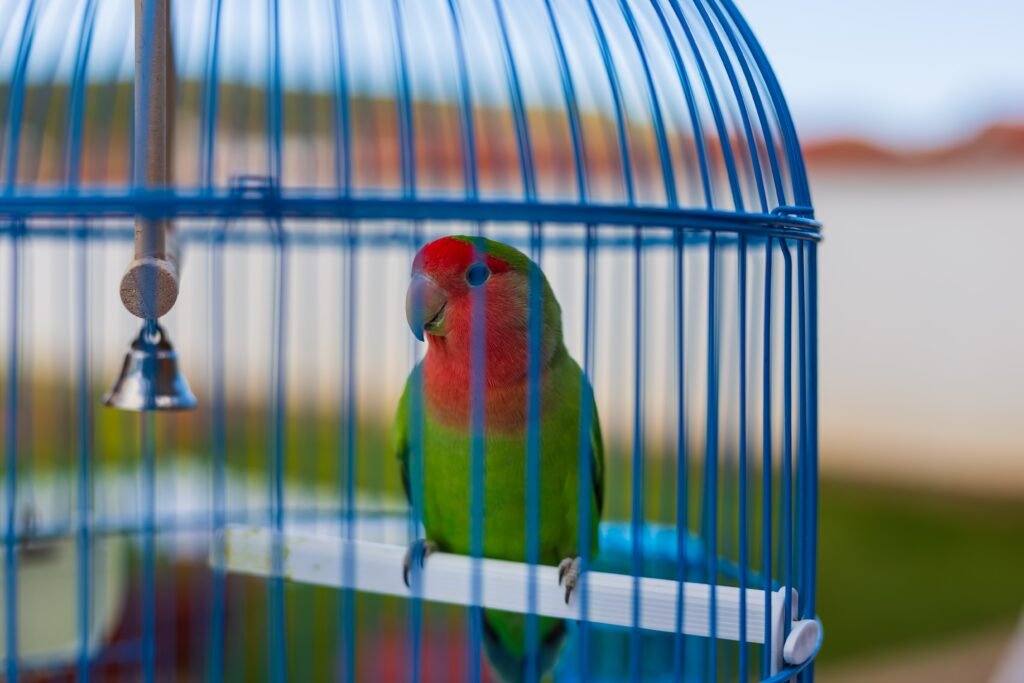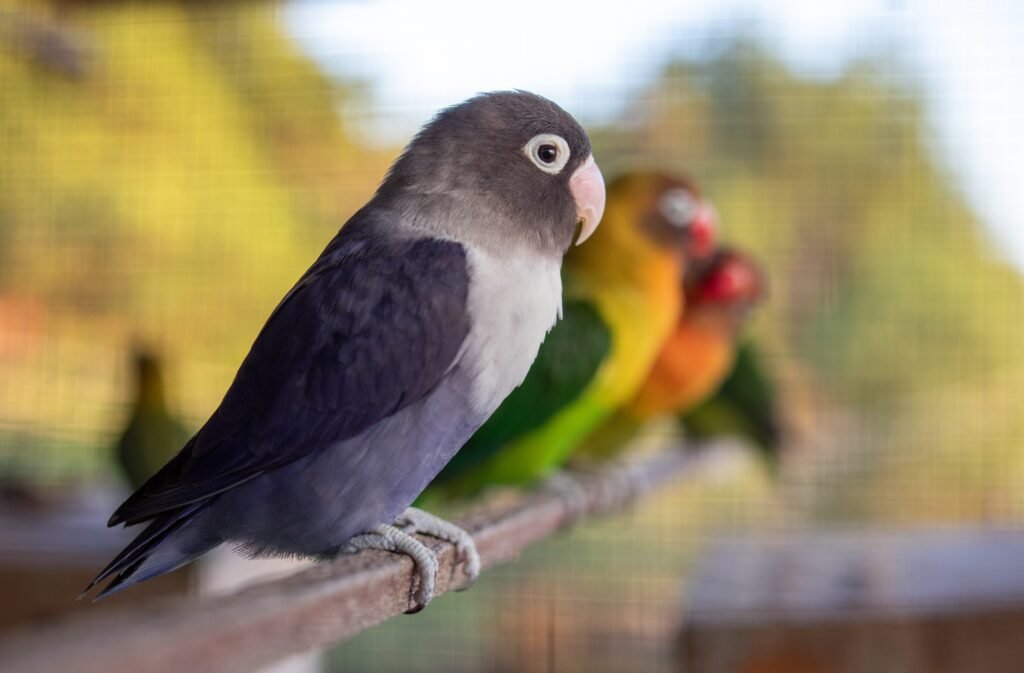Lovebirds Breeding: Understanding the Essentials for Successful Pairing
Lovebirds are popular pet birds known for their vibrant colors and affectionate nature. Breeding lovebirds can be a rewarding and exciting experience for bird enthusiasts. In this article, we will explore the various aspects of lovebird breeding, including their breeding behavior, suitable breeding environment, and important considerations for successful breeding.
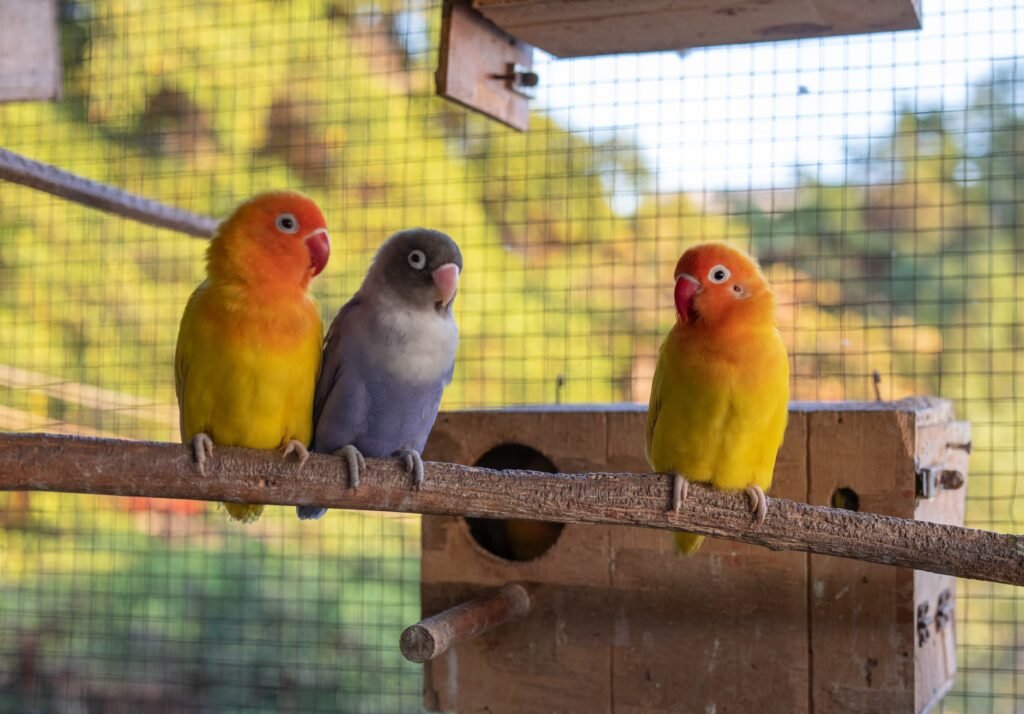
Breeding Behavior of Lovebirds
Lovebirds are monogamous birds, which means they form strong pair bonds and mate for life. When it comes to breeding, lovebirds exhibit fascinating behaviors. The male lovebird often initiates courtship by displaying his affection through various rituals, such as offering food to the female, singing, and dancing. This courtship behavior allows the male lovebird to show his dedication and devotion to his potential mate. The female lovebird, if receptive, will respond by preening the male and reciprocating his affectionate gestures. This mutual grooming strengthens their bond and signifies their readiness to breed.
Once the pair has formed a strong bond, they will start nesting and breeding. Lovebirds are cavity nesters, and they prefer nesting boxes or suitable enclosures that mimic tree cavities in their natural habitat. Providing a spacious nesting box with appropriate nesting materials, such as wood shavings or shredded paper, is essential for successful breeding. The nesting box should be large enough to accommodate both the male and female lovebird comfortably, allowing them to build a nest and incubate their eggs.
During the breeding process, lovebirds also engage in a behavior known as “beak fencing.” This behavior involves the birds playfully tapping and rubbing their beaks together, which helps strengthen their bond further. Beak fencing also serves as a form of communication between the pair, as they establish their roles and hierarchy within the relationship.
Key Points:
- Lovebirds are monogamous birds that mate for life.
- Male lovebirds initiate courtship through rituals like offering food, singing, and dancing.
- Female lovebirds respond to courtship by preening the male and reciprocating affectionate gestures.
- Lovebirds are cavity nesters and require a spacious nesting box with appropriate materials.
- Beak fencing is a behavior that strengthens the bond between lovebird pairs.
Creating the Ideal Breeding Environment
To encourage lovebirds to breed, it’s vital to create a suitable breeding environment that meets their specific needs. Here are some key factors to consider:
Cage or Aviary Setup
Lovebirds need a spacious cage or aviary to accommodate both the breeding pair and potential offspring. The cage should be large enough to allow the birds to move around comfortably and engage in natural behaviors. Providing multiple perches at different heights and various toys will ensure that the lovebirds have opportunities to exercise, explore, and mentally stimulate themselves. The presence of different perches will also mimic the variety of perching options available in their natural environment.
Nesting Box
Providing a suitable nesting box is crucial for lovebird breeding. The nesting box should be made of a safe and durable material, such as untreated wood or sturdy plastic, with a small entrance hole to ensure the birds’ safety and privacy. The dimensions of the nesting box should be appropriate for the lovebird species you are breeding. Placing the nesting box in a quiet and undisturbed area of the cage or aviary will help the lovebirds feel secure and encourage successful breeding. It is also important to regularly clean and disinfect the nesting box to maintain a hygienic environment for the birds and their offspring.
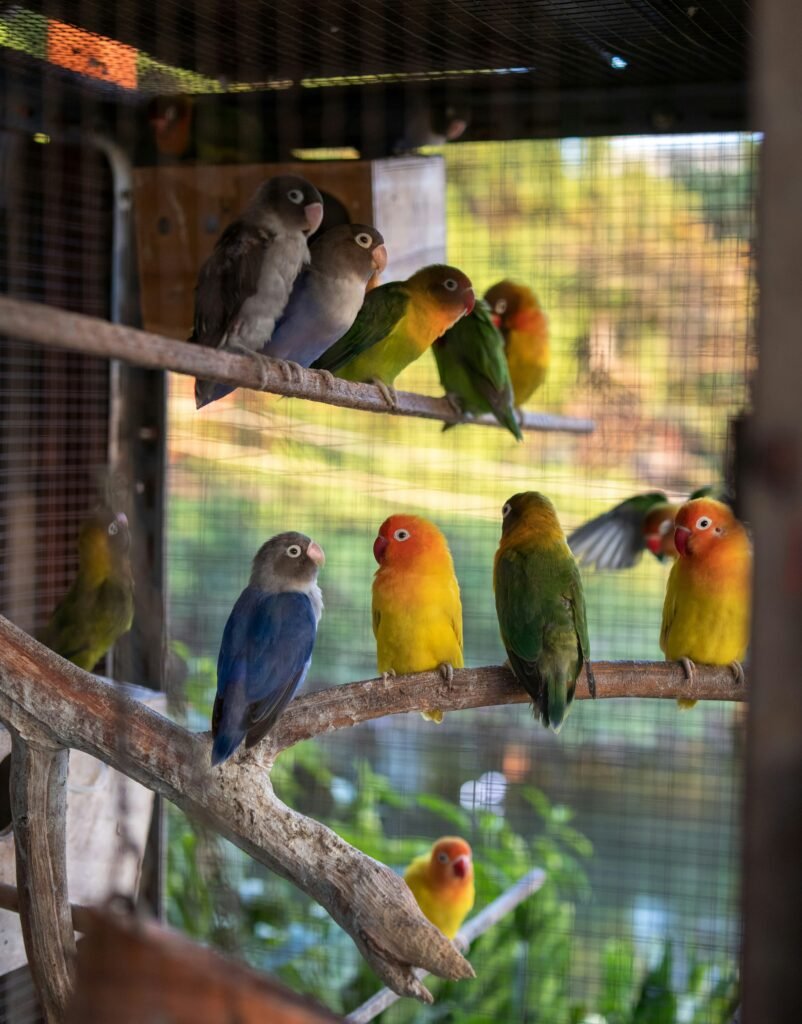
Temperature and Lighting
Lovebirds thrive in a warm and well-lit environment. Maintaining an optimal temperature range of 70-80°F (21-27°C) in the breeding area is essential for the health and breeding success of the lovebirds. Temperature fluctuations can negatively impact their reproductive behavior and overall well-being. Additionally, providing natural or full-spectrum lighting can positively influence their reproductive behavior by mimicking the natural light cycles they experience in the wild. It is important to ensure that the lighting is not too bright or too dim, as it can affect the lovebirds’ breeding behavior.
Nutrition and Diet
A well-balanced diet plays a crucial role in the breeding success of lovebirds. To ensure optimal health and fertility, their diet should consist of high-quality commercial pellets that are specifically formulated for lovebirds. These pellets provide a balanced nutritional profile, including essential vitamins, minerals, and amino acids. Along with the pellets, fresh fruits and vegetables should be offered daily to provide additional nutrients and enrichment. Lovebirds also enjoy occasional treats, such as millet sprays or small amounts of seeds, which can be given as rewards or for added variety. It is important to avoid feeding lovebirds any toxic foods, such as avocado or chocolate, as they can be harmful to their health.
Key Points:
- Lovebirds require a spacious cage or aviary with multiple perches and toys for exercise and mental stimulation.
- The nesting box should be made of safe and durable materials, with a small entrance hole for safety and privacy.
- Maintaining an optimal temperature range of 70-80°F (21-27°C) is crucial for breeding success.
- Providing natural or full-spectrum lighting can positively impact lovebirds’ reproductive behavior.
- A well-balanced diet consisting of high-quality pellets, fresh fruits, vegetables, and occasional treats is essential for breeding success.
Breeding Considerations and Tips
Successful breeding of lovebirds requires careful attention to certain considerations. Here are some tips to enhance your chances of breeding success:
Age and Compatibility
Lovebirds reach sexual maturity around 10-12 months of age. It’s essential to select breeding pairs that are healthy and of compatible age. Introducing young lovebirds to each other at an early age can help them form a strong bond, increasing the likelihood of successful breeding. However, it is important to conduct proper research on the specific lovebird species you are breeding, as some species may have different age requirements for breeding.
Providing Privacy
Lovebirds are sensitive to disturbances and require privacy during the breeding process. It’s crucial to minimize external noise and disturbances around the breeding area. Avoid frequent handling or moving of the cage or aviary, as it can disrupt the lovebird’s breeding behavior. Providing visual barriers, such as curtains or screens, can also help create a sense of privacy for the breeding pair.
Monitoring and Supervision
Regular monitoring and supervision are essential during the breeding process. Observing the lovebirds closely allows you to identify any potential issues or complications that may arise. It’s important to intervene if you notice any signs of aggression, nest abandonment, or any health concerns that may affect the breeding pair or their offspring. Additionally, monitoring the temperature and humidity levels in the breeding area can help ensure optimal conditions for successful breeding.
Egg Incubation and Chick Care
Lovebird eggs typically hatch within 21-23 days. However, in some cases, the breeding pair may neglect or abandon the eggs. In such situations, it may be necessary to intervene and manually incubate the eggs or provide suitable foster parents. Proper care and nutrition for the chicks are essential for their healthy growth and development. Providing a warm and safe environment, along with a balanced diet, will help the chicks thrive. It’s important to avoid excessive handling of the chicks, as it can lead to stress or injury.
Key Points:
- Select breeding pairs that are healthy and of compatible age.
- Minimize external noise and disturbances to provide privacy for the breeding pair.
- Regular monitoring and intervention are necessary to address any issues or complications.
- Provide appropriate care and nutrition for the chicks to ensure their healthy growth and development.
- Avoid excessive handling of the chicks to prevent stress or injury.
Conclusion
Breeding lovebirds can be a fulfilling and enjoyable experience for bird enthusiasts. By providing the right breeding environment, understanding their behavior, and following the necessary considerations, you can increase your chances of successful lovebird breeding. Remember to prioritize the well-being and health of the breeding pair and their offspring throughout the process. Happy lovebirds breeding!

